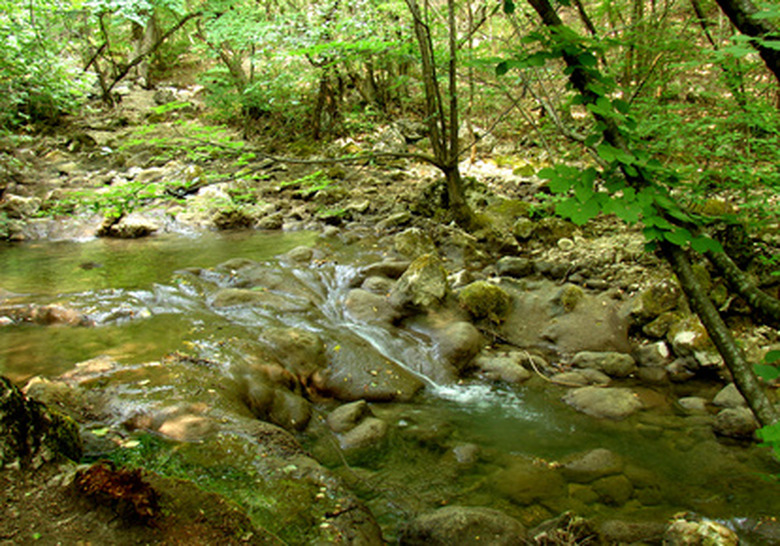The Best Pine Trees To Grow In Western Pennsylvania
Pine trees and evergreen trees provide lush, green foliage throughout the year. Western Pennsylvania is marked by its inclusion in the Appalachian mountain range, peppering the area with thick, lush forests and elevations not seen in other portions of the state. There are some pines easily grown in this portion of the state.
White Pine
White pine trees, Pinus strobus, are characterized by soft, blue-green needles. The Eastern white pine has the capability of growing 100- to 120-feet tall, but generally grow between 50 to 80 feet. Quick to grow, their growth habit slows only when they reach 50 years of age or more. Needles are clustered on the branch in groups of three or five. White pine bark is a solid gray color and remarkably smooth. White pine is tolerant of full sun, partial sun or partial shade, making it ideal for a variety of environments. This tree grows best in acidic sandy, loamy soil with adequate drainage. It is moderately drought tolerant, according to the University of Florida Extension Office. White pine is useful in areas depleted or damaged by strip mining and anthracite coal extraction, common in the western portion of the state.
- Pine trees and evergreen trees provide lush, green foliage throughout the year.
- White pine is useful in areas depleted or damaged by strip mining and anthracite coal extraction, common in the western portion of the state.
Norway Spruce
The Norway spruce tree, Picea abies, is native to Europe. Widely naturalized in the United States, the Norway spruce grows between 40- and 60-feet tall. Norway spruce prefers full sun and grows best in moist, well-drained soil with slight acidity. Norway spruce produces dark, gray green leaves and is highly wind resistant. The needles are arranged in a whorl around the branch and measure 1/2 inch to 1 inch in length. Norway spruce trees are used as windbreaks, ornamental trees and are grown commercially for Christmas trees. Norway spruce is also unpalatable to deer, making it of special interest to those in western Pennsylvania according to the Trees of Pittsburgh website.
- The Norway spruce tree, Picea abies, is native to Europe.
- Norway spruce is also unpalatable to deer, making it of special interest to those in western Pennsylvania according to the Trees of Pittsburgh website.
American Arborvitae
American Arborvitae, Thuja occidentalis, is native to North America. It grows between 40- and 70-feet tall, and produces dull yellow-green and blue-green needles. It needs full sun to grow healthy, and prefers a well-drained, alkaline soil. American arborvitae needs deep soil to allow its complex system of roots to flourish. Arborvitate are used as privacy shrubs and hedges, windbreaks, and for ornamental properties. The United States Department of Agriculture (USDA) plants database lists the majority of American Arborvitate trees in the western half of the state.
